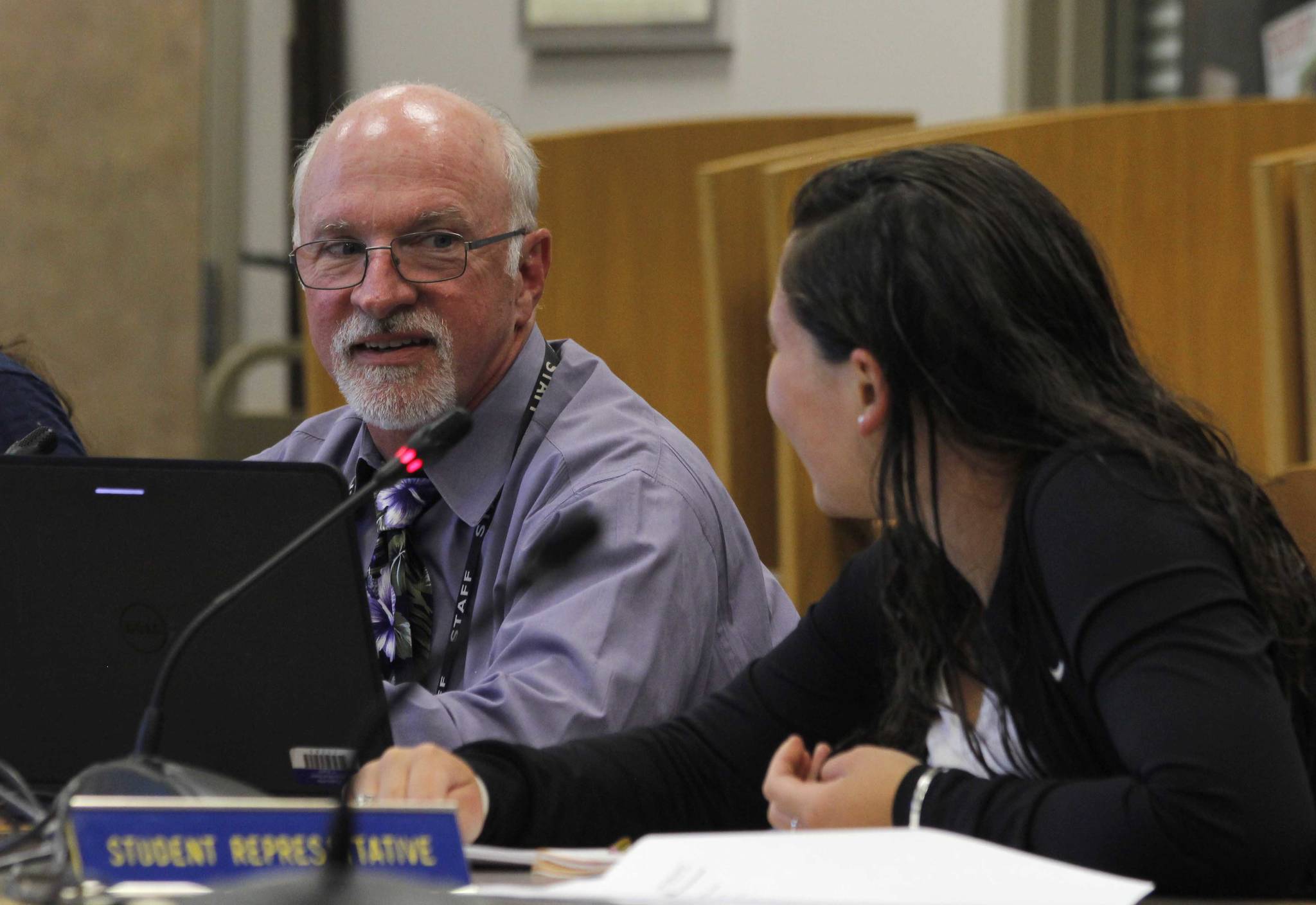It’s not unusual to have teacher vacancies after a school year. What is unusual, Juneau School District Director of Student Services Bridget Weiss said, is having vacancies this close to school starting.
Standing in the library at Juneau-Douglas High School on Tuesday night — just eight days before the school year starts — Weiss said the amount of vacancies in the school district is about the same as past years, but usually the jobs are filled by this point. Schools throughout the country, and especially in Alaska, are dealing with a lack of teachers.
“It just is because of that statewide shortage that it’s been slower filling these,” Weiss said.
As of Tuesday morning, there were 133 job listings for teachers on Alaska Teacher Placement, a site that tracks education jobs in Alaska. In addition, there are 90 student support jobs open, a category that includes numerous special education positions. According to the JSD website, there are five teaching positions and six student support positions open. Weiss said the district has leads on most of those open positions.
Weiss spoke at Tuesday’s Board of Education meeting in particular about the four special education openings in Juneau. The positions span all levels of the school system, including an opening at Glacier Valley Elementary School, Riverbend Elementary School, Dzankik’i Heeni Middle School and Thunder Mountain High School.
Norm Wooten, the executive director of the Association of Alaska School Boards (AASB), said this isn’t a new problem. Salaries for teachers in Alaska have been falling in recent years, and many schools are offering defined contribution benefits such as a 401(k) instead of defined benefits such as a pension.
“It’s been happening for several years for a variety of reasons,” Wooten said, “(like) going from a defined benefits to a defined contribution plan. We used to be the state that paid the most or the second most for a number of years and we’ve slipped down below that.”
Weiss said that finding people to fill these positions is usually challenging, even without a statewide shortage. The school district has to find teachers with the right qualifications for these spots, and also has to convince the individuals to move to Juneau, which can prove challenging. Juneau’s high cost of living — the cost of groceries, housing, utilities, transportation and health care are all above the national average, according to the Council for Community and Economic Research — can make the town a tough sell, Weiss said.
“We work, trying to find them housing that’s reasonable, but that’s definitely the biggest obstacle,” Weiss said. “Moving to Juneau from anywhere else in the Lower 48 is expensive, so that’s another piece, but definitely housing costs in Juneau is a deterrent for people moving into Juneau from the outside.”
Weiss said the school district is talking with various candidates to fill most of the open positions, but with the jobs still open this close to the year starting, there will be vacancies when students arrive next week.
“What that means is school opens without teachers, which increases class sizes,” Wooten said. “You’ve got to take the kids. You can’t say, ‘We don’t have a teacher for you,’ and lock the door.”
For special education positions, Weiss said, the school district would look for long-term substitutes to start the school year while they continue to work on the hiring process for the full-time positions.
Getting updated
The board approved changes to the Board of Education Policy Manual on Tuesday, and it created a stir among the board members.
Board President Brian Holst called it “monumental.” Board member Josh Keaton called it “amazing work” and “one giant step in moving in the right direction.” Chief of Staff Kristin Bartlett, who spent 18 months working on it, said it wasn’t glamorous work at all, but the updates to the manual are vitally important.
The most recent update to the manual, which dictates how the board lays out its goals and works with the rest of the district to accomplish them, was in the 1990s. Some of the policies were woefully out of date, Bartlett said.
“It’s been gratifying to be able to clean up all of the inconsistent things or all of the incorrect things,” Bartlett said.
Technological advances dictated changes in the way the school district deals with cellphones and internet usage, which resulted in some changes to the manual. For example, the section dealing with bullying at school now includes policies about cyberbullying.
Societal changes also made their way into the manual, Bartlett said, as the anti-discrimination section now includes policies about discrimination based on gender identity.
Further changes to the manual, which have now been adopted, are on the school district’s website.
Bartlett heavily consulted the AASB regulations and talked with other school districts in that network to develop the new policies. Now Juneau shares many of its policies and regulations with schools in the AASB. Fifty-two of the state’s 53 school districts are part of AASB, and Bartlett is looking forward to working with all of them.
“Now when we have questions about something, we can consult with other districts,” Bartlett said. “We have consistent policy numbers and we can work together.”
• Contact reporter Alex McCarthy at alex.mccarthy@juneauempire.com.

